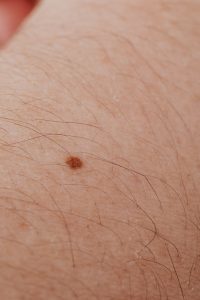Taking care of our skin is essential for overall well-being, and one aspect that often goes unnoticed is regular mole checks. Moles, also known as nevi, are common growths on the skin that can be harmless, but they also have the potential to develop into skin cancer. In this blog post, we will discuss the significance of regular mole checks for adults and provide valuable information on what to look for, when to seek medical attention, and how to maintain healthy skin.
Understanding Moles
Before diving into the importance of mole checks, it’s crucial to understand what moles are and how they can change over time. Moles are clusters of pigmented cells called melanocytes, which give colour to our skin. Most moles are harmless and do not require medical attention. However, some moles can transform into melanoma, a type of skin cancer that can be life-threatening if not detected early.
The Importance of Regular Mole Checks
-
Early Detection: Regular mole checks help identify any changes in existing moles or the appearance of new ones. Detecting potential warning signs at an early stage significantly increases the chances of successful treatment and reduces the risk of skin cancer.
-
Skin Cancer Prevention: Skin cancer, including melanoma, is one of the most common types of cancer. By monitoring your moles regularly, you can identify any abnormalities and take necessary precautions to prevent skin cancer. Remember, prevention is always better than cure.
Signs to Look for During Mole Checks
During your mole checks, watch for any changes in existing moles’ colour, size, shape, or texture. Here are some specific signs to be aware of:
-
Asymmetry: Suspicious moles are often irregular in shape, with one half looking different from the other half.
-
Border Irregularity: Malignant moles may have blurry, jagged, or uneven edges instead of a smooth border.
-
Colour Variation: Moles that have multiple colours, such as shades of brown, black, blue, or red, should be examined by a dermatologist.
-
Diameter: Moles larger than 6 millimetres may be a cause for concern.
-
Evolving Moles: Any mole that changes in size, shape, colour, or texture over time should be examined by a medical professional.
When to Seek Medical Attention
If you notice any of the aforementioned warning signs or have concerns about a mole, it’s essential to consult a dermatologist promptly. Dermatologists are specialized doctors who can evaluate your moles, perform a thorough examination, and determine the necessary steps to ensure your skin health.
Maintaining Healthy Skin
Apart from regular mole checks, maintaining healthy skin is crucial in preventing skin damage and reducing the risk of skin cancer. Here are some general tips for maintaining healthy skin:
-
Sun Protection: Always apply sunscreen with a high SPF, wear protective clothing, and limit sun exposure, especially during peak hours.
-
Self-Examinations: Perform monthly self-examinations to familiarize yourself with your moles and detect any changes.
-
Healthy Lifestyle: Adopt a healthy lifestyle by eating a balanced diet, staying hydrated, and avoiding excessive alcohol consumption and smoking.
-
Dermatologist Visits: Schedule regular check-ups with your dermatologist, especially if you have a history of skin cancer or other risk factors.
Here at One Hatfield Hospital, we offer dermatology services and have a dedicated team of dermatologists on hand to rapidly assess, diagnose and treat moles along with a range of other skin conditions.




 One Ashford
One Ashford One Hatfield
One Hatfield